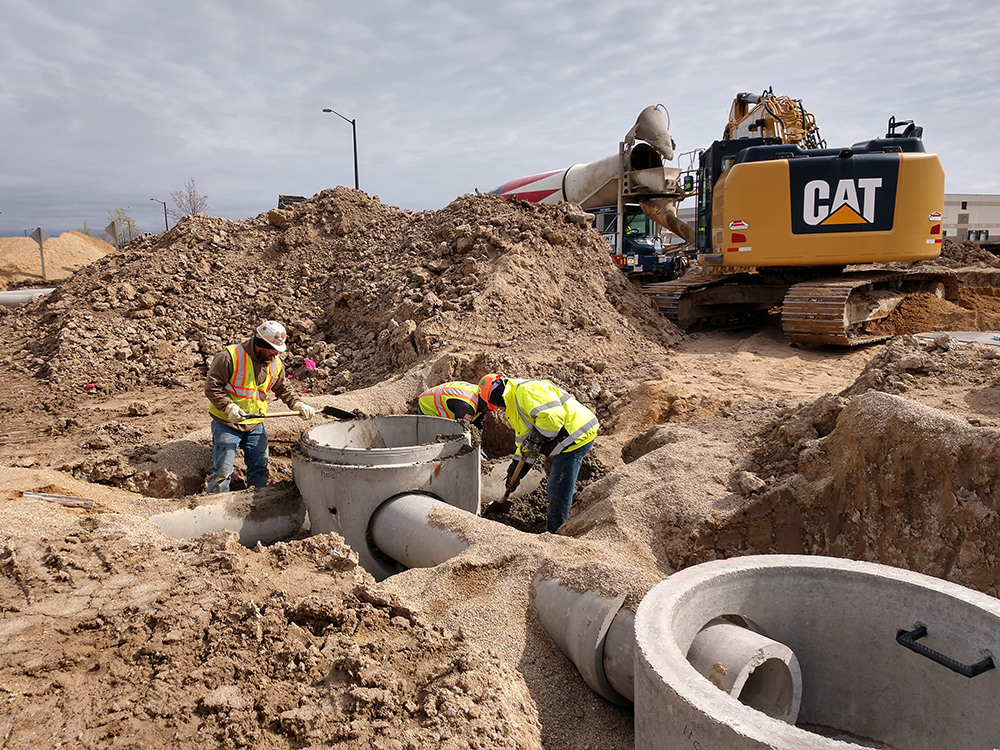How Developers Can Stay Competitive
For our developers, controlling project costs while maintaining quality has never been more challenging. The prices of key construction materials such as concrete, asphalt, lumber, and steel have become increasingly volatile. This is due to a combination of global supply chain disruptions, tariffs, inflation, and local demand pressures.
For developers, these rising costs are primarily experienced through your construction contractors, who are responsible for procuring materials. Even modest cost increases can significantly impact the profitability of smaller-scale projects, which often operate on tighter margins.
Fortunately, there are strategies developers can adopt to work effectively with contractors and manage the impact of material price increases.
1. Engage Contractors Early and Plan Procurement Strategically
Why it matters
Material prices can fluctuate quickly. Early engagement with your contractor allows both parties to plan purchases in advance, stabilize costs, and avoid last-minute price shocks.
Strategies
- Encourage contractors to negotiate forward contracts with suppliers for critical materials. Securing concrete, asphalt, or pipe deliveries early in the season can prevent paying peak-season premiums.
- Discuss bulk purchasing opportunities if multiple phases of a project are planned. Even though storage may be limited, staggered deliveries can protect against sudden price hikes.
- Request a detailed procurement schedule from your contractor so that material orders align closely with the construction schedule, reducing storage costs and waste.
InfraCor’s role
We assist developers in collaborating with contractors to develop realistic procurement timelines and identify cost-saving opportunities in material scheduling.
2. Explore Material Alternatives Through Your Contractor
Why it matters
Traditional materials may be expensive, but contractors can often source alternative products that are cost-effective while meeting regulatory and performance requirements.
Options
- Recycled or engineered materials such as recycled concrete for base layers or recycled asphalt products (RAP) can reduce costs and environmental impact.
- Prefabricated or modular components can reduce onsite labour requirements and material waste. Examples include pre-cast concrete elements or modular utility vaults.
- Plastic vs Concrete Materials: In addition to recycled aggregates, developers and contractors can also consider the use of plastic materials in underground utilities and infrastructure elements. High-density polyethylene (HDPE) or polyvinyl chloride (PVC) pipes are increasingly used as alternatives to traditional concrete pipes for stormwater, sanitary, and drainage systems. Plastic pipes are lighter, easier to transport, and faster to install, reducing labour and equipment costs. They also resist corrosion and chemical degradation, often providing longer service life in challenging soil conditions. Similarly, plastic or composite modular elements can replace precast concrete components in certain applications, offering reduced weight, easier handling, and potential cost savings without compromising structural performance.
- Composite materials may substitute for higher-cost options such as steel in certain non-structural applications, or Fibreglass reinforced plastic in some vaults or lift stations.
InfraCor’s role
We work with developers and contractors to identify alternatives that meet codes, provide longevity, and reduce overall project costs.
3. Optimize Design to Reduce Material Needs
Why it matters
Small changes in design can have a large effect on the quantity of materials your contractor needs to purchase.
Strategies
- Efficient lot layouts and road alignments can reduce asphalt and concrete volumes.
- Coordinating water, sewer, and stormwater lines reduces excavation, backfill, and installation costs.
- Designing compact stormwater retention systems, bio-swales, or green infrastructure reduces the volume of concrete and earthworks required.
InfraCor’s role
We provide design optimization that balances cost efficiency with code compliance and long-term functionality, ensuring that contractors can deliver projects using fewer materials without compromising quality.
4. Ensure Accurate Quantity Estimates and Cost Modelling
Why it matters
Contractors base their bids on material estimates. Inaccurate estimates can result in higher costs for developers or delays if additional materials must be sourced mid-project.
Strategies
- Request detailed take-offs from your contractor that include allowances for waste and overage.
- Work with your contractor and engineering team to create cost models that reflect current market prices and potential price fluctuations.
- Conduct scenario planning to assess the financial impact of material cost increases and ensure contingency budgets are adequate.
InfraCor’s role
We provide precise quantity calculations, predictive cost models, and market insights to help developers anticipate material costs and avoid budget surprises.
5. Foster Strong Relationships Between Contractors and Local Suppliers
Why it matters
Contractors with strong supplier relationships often gain access to better pricing, more reliable deliveries, and alternatives that still meet code requirements.
Strategies
- Encourage your contractor to establish consistent relationships with regional suppliers.
- Negotiate flexible delivery and payment terms to manage cash flow without compromising construction timelines.
- Consider supplier recommendations for equivalent or off-spec materials that meet performance standards at lower cost.
InfraCor’s role
We leverage our industry connections to help developers and contractors identify reliable suppliers and ensure material quality and availability.
6. Plan for Contingencies
Why it matters
Even with careful planning, unforeseen price increases or supply delays can affect project schedules and budgets.
Strategies
- Allocate a contingency within the overall project budget specifically for material cost fluctuations.
- Identify which materials are most likely to experience volatility and develop alternative sourcing strategies.
- Maintain communication with contractors to address potential supply challenges proactively.
InfraCor’s role
We assist in contingency planning and risk management, ensuring developers and contractors are prepared for material price fluctuations and supply interruptions.
Final Thoughts
Rising material costs are a reality for all developers, but proactive planning, thoughtful design, and strong collaboration with contractors can mitigate their impact. By engaging contractors early, exploring alternatives, optimising designs, ensuring accurate cost modelling, fostering supplier relationships, and planning for contingencies, developers can maintain profitability and competitiveness.
Partnering with experienced land development engineers such as InfraCor provides not only technical expertise but strategic guidance, turning potential cost challenges into opportunities for efficiency and smarter project delivery.

